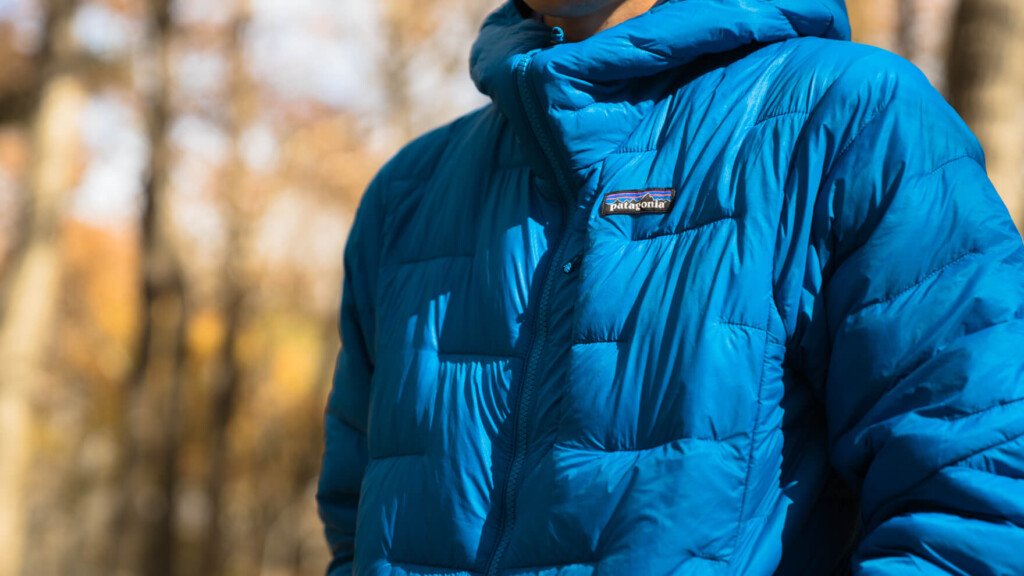
Review: Patagonia Macro Puff Hoodie I've been waiting for this! The long-awaited thick type has been released for the high-performance insulation that has been the talk of "just like down."
table of contents
- This is how humanity's challenge to feathers came to
- Patagonia Macro Puff Hoodie Features
- Main Specifications and ratings
- From "micro" to "macro". What's the difference? ~Detailed review~
- From a tight silhouette to a loose silhouette for outerwear
- Prumafil is a groundbreaking padding material that combines the heat retention power that approaches down and the functionality of synthetic fibers.
- A wide range of details including a wide range of pockets
- What is the weight and storage capacity?
- We walked through the Nasu-dake ridgeline in November, where the winds blew through the macro puff hoodie
- Summary: The more you wear it, the more you won't be able to let go of it, the more you'll endure it with a "down-like heat retention efficiency x resistant to wet" benchmark for future synthetic fiber insulation
This is how humanity's challenge to feathers came to
A micro puff hoodie that was finally renewed in 2017, thanks to the down-like synthetic fiber padding "Purmafil" that patagonia has newly developed over a decade. I still will not forget that shock.
Although it is synthetic, it is as light as down, and is soft and resilient, and its texture and comfort are completely stress-free when you put it on, giving it a sense of quality that makes you think, "Have the artificial feathers finally come this far?" The efficient and stylish quilting was also excellent.
However, it's not that I wasn't unhappy. Especially about its insulation properties. As mentioned in last year's comparison of insulation review , considering its lightness, it has ample heat retention, but it is not enough to actually be used as a main winter insulation. I would like to see more possibilities for this groundbreaking synthetic material. Honestly, I thought that way, and at this point I was loudly yelling, "If I add one more padding, I'll make an excellent cold-weather outerwear."
So what do you think, the exhibition will be held in January this year. I don't know if your wish was understood, but the item that I had imagined back then is displaying the front entrance of the Patagonia booth in a huge way!
https://www.instagram.com/p/BtidX27BvuO/
This is Macro Puff Hoodie, a cold-weather insulation jacket filled with plum-mafil, . What really makes it different from Micro Puff? What is the overall practicality? As I was excited with anticipation, I actually tried wearing it while comparing the models from both sides. Let's take a look right away.
Patagonia Macro Puff Hoodie Features
This innovative cold protection insulation jacket is light and warm like down, wrapped in lightweight ripstop recycled nylon that is as light as down and highly resilient. It is light and warm like down, and maintains heat retention even when wet like synthetic filling. The long hem covers the hips and a slightly more roomy silhouette make it perfect for adding it to the shell and adding it to the shell under low temperatures. The excellent fit and adjustable hood is suitable for helmets. The details are carefully thought out practical features that are useful even when you are still enduring the cold, such as a large pocket on the left chest and a two-way front zipper that makes it easy to access the belay loop. On the other hand, the quilt structure that combines efficiency and design, as well as a rich, high basic performance, such as ease of movement and comfort, also has the potential to fit a variety of winter activities.
Recommended points
- Lightweight and highly resilient synthetic fiber padding, enclosed to the limit
- The wind is completely shut out. High weather resistance that doesn't bother even a little rain
- A well-made hood that ensures solid heat retention throughout
- The stability of insulation that does not lose its shape even after washing
- Easy to use, including a wide range of pockets and a smooth, easy-to-adjust two-way front zipper
Points that interest me
- Can't compress as small as I expected
- A safe silhouette and coloring
Main Specifications and ratings
| item | Specifications and ratings |
|---|---|
| Official weight | 434g |
| Actual measured weight | 417g (Actual measurement of S size) |
| material |
*Fair trade and certified sewing is adopted |
| |
| Comfort | ★★★★☆ |
| Thermal insulation | ★★★★★ |
| It's not stuffy | ★★☆☆☆ |
| Mobility | ★★★★☆ |
| Weather Resistant | ★★★★★ |
| weight | ★★★☆☆ |
| Functionality | ★★★★☆ |
| Storageability | ★★☆☆☆ |
| comprehensive evaluation | ★★★★☆ |
From "micro" to "macro". What's the difference? ~Detailed review~
From a tight silhouette to a loose silhouette for outerwear
First, let's look at the fit and comfort while comparing it to the predecessor model, the Micro Puff Hoodie (hereafter referred to as Micro) (photo below). Both sleeves are slightly longer for ordinary Japanese people. The micro (right) has a tight silhouette with the sides and sleeves and the hem length up to the waist, while the macro puffs (left, below, macro) are elegant but not cramped, and have a slightly safer shape. I couldn't expect this looseness, and the moment I put it on, I thought I had made the wrong size.
The loose silhouette of this macro is thought to be designed to be easier to use in situations where you are more conscious of protecting the cold. For example, you can wear it over a shell while climbing belaying, or you can wear it over the top when hiking up and down in the backcountry. The main focus is to be used as an outerwear. On the other hand, it is thought that Micro is conscious of protecting the cold in a slightly warmer season (light clothing), or that it is tighter with layers as a middle layer in mind.
It is not strictly determined which answer is correct. In that sense, if you want to layer macros inside as mainly middle layers, you might consider a size one lower. The opposite is also true.
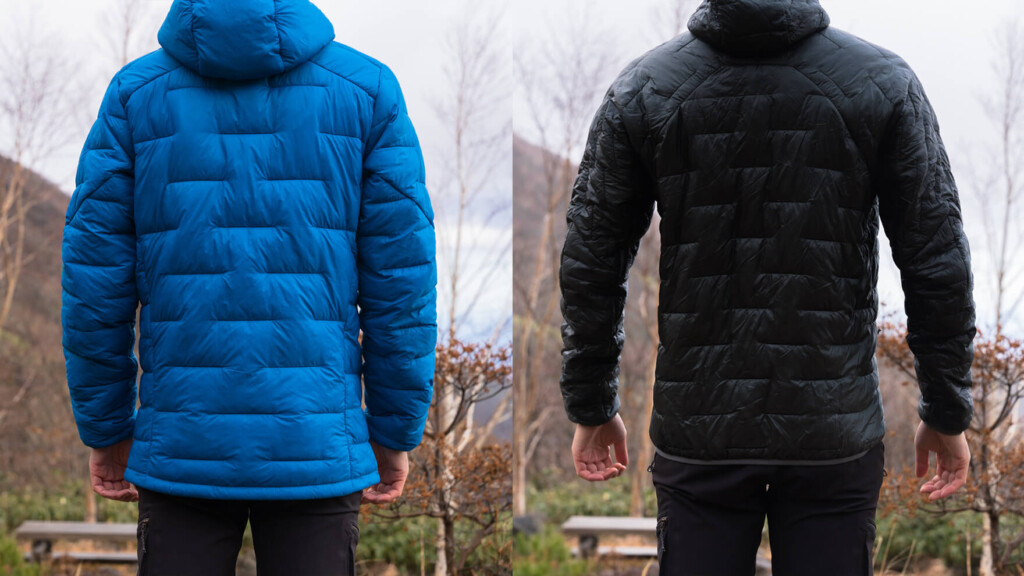
The back is intended to cover the buttocks. This prevents the jacket from slipping off and prevents cold air from entering.
Prumafil is a groundbreaking padding material that combines the heat retention power that approaches down and the functionality of synthetic fibers.
Next, it is important to note that the key to this jacket is the increased amount of the lightweight and most compressible padding that Patagonia has made so far. The macro puff is larger than the micro (90 grams and 135 grams), and the amount is more abundant than ever before, and as expected, the plump and firm filling makes it a puff puff. It has a natural loft feeling that would normally be mistaken for someone who doesn't know anything for anything.
From the information revealed, Purumafil seems to be a material in which polyester fiber units with a structure that is very similar to down are connected in some way to form a continuum.
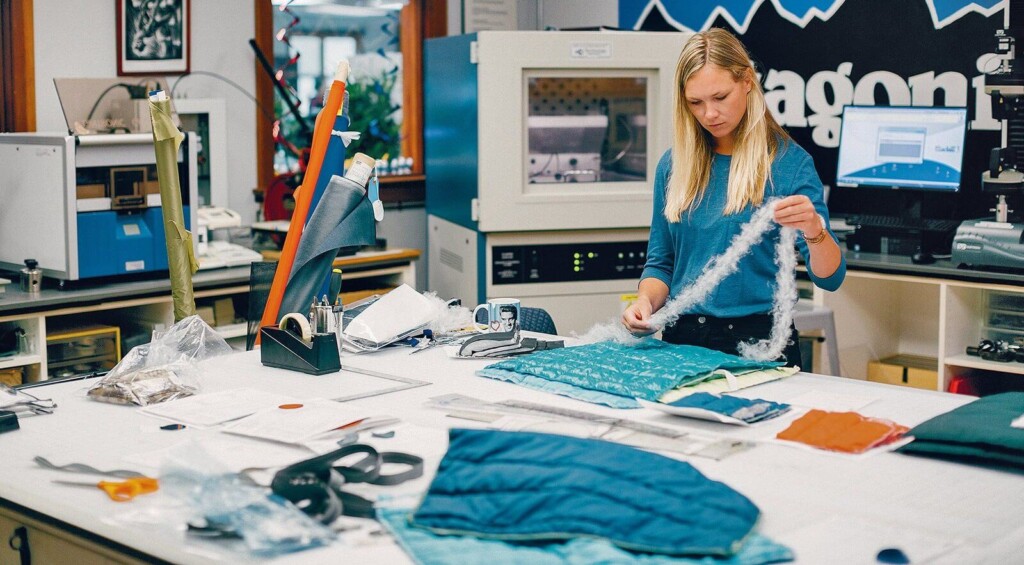
Purumafil insulation is a continuous synthetic insulation material that mimics the down structure. *From the official patagonia website
Each piece has a down-like structure, which makes it highly resilient and provides high insulation even though it is light. Furthermore, the unique quilt structure, which was created after thoroughly studying this special polyester series, minimizes seams and stabilizes and maximizes the loft, making it hard to see any bias in the loft.
Honestly, I was surprised by this. When mimicking down, the filling will stick when wet or washed, causing unevenness, and if not properly dried and scattered, cold spots will be created. However, when I washed it, it was almost completely unmoving inside the loft. I am very pleased with PrimaLoft® Black Insulation ThermoPlume®, a modern synthetic material that imitates the same down, and from experience, it can turn out to be slightly shaped by washing.
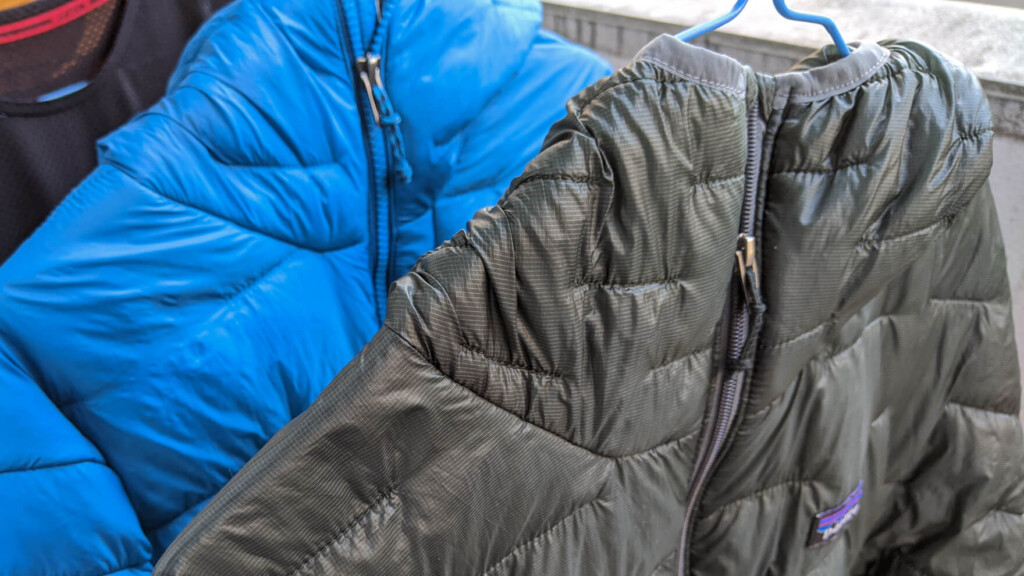
Both the micro and macro are so lofted that you can wear it as is even if you put it in a net and wash and dry it out. Excellent.
The front and backing are made of 10 denier and thin, tightly recycled ripstop nylon. It is very smooth and comfortable to the touch. It is not by any means durable in terms of thickness, and I am not confident that I will be unharmed if I brush my teeth. However, if you don't use it in such a crazy way, there's no need to worry about it being ripped straight away for now.
A wide range of details including a wide range of pockets
In terms of functionality, one major difference from the micro is the large, rich hood area. There is an adjustment drawcord on the back of the head, so it can be fitted to the perfect size whether you wear it over a helmet or with your head on.
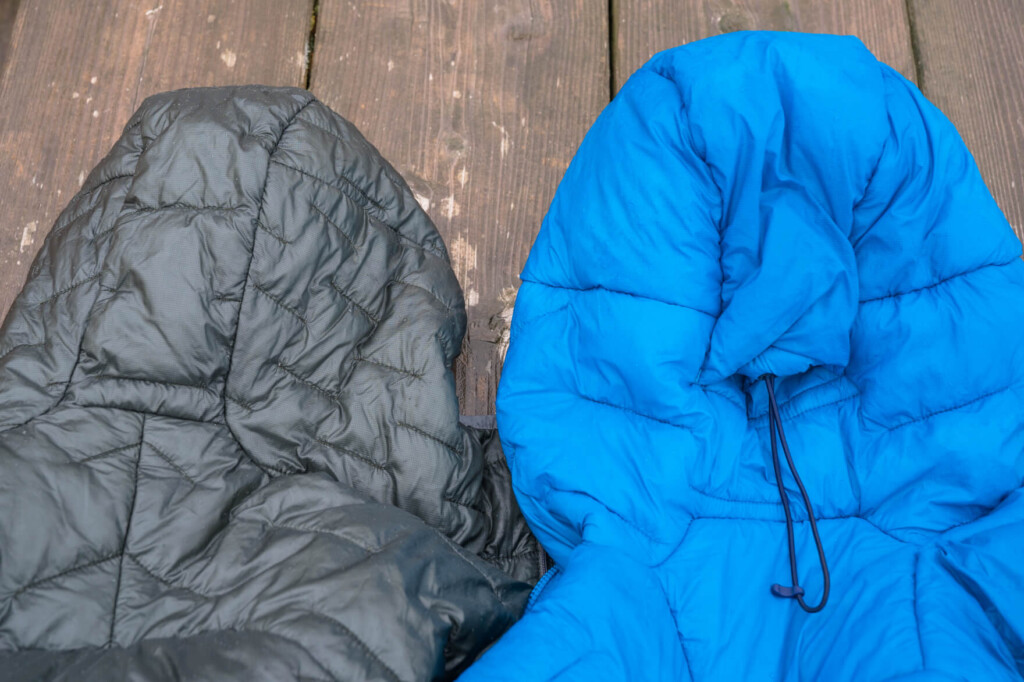
The hood on the macro (right) has a tab and drawcord that are easy to pick up even when wearing gloves.
The front zipper is lighter and has been designed to be used in cold regions, and has also become a vislon double zipper that makes it easier to access the belay points on the harness (left of the photo below).
Basically, both micro and macro pockets are not much different, but all the macro pockets are large, making them sized so that they can be used to operate them with gloves.
Large drop-in pockets on the left and right inside are both micro and macro. Not only can you store snow gloves, but also ski stickers (climbing skins), making it convenient.
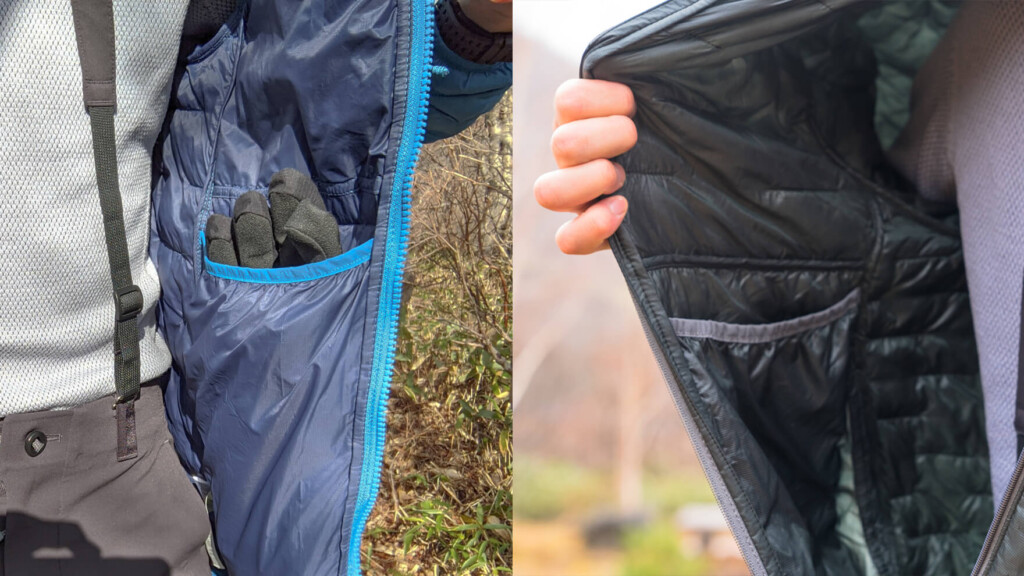
The large pockets on the left and right inside are simply sewn on the edges of the hand pockets, but the convenience is very different if there are or not.
The zipper pocket on the left chest, which is placed only on the macro, is larger than I expected. Not only did the Pixel 3a, but I could easily fit a long wallet.
By the way, drawcords are placed inside the left and right hand pockets to adjust the hem width.
What is the weight and storage capacity?
From micro to macro, the appeal of weight and storage has also decreased. However, it is still slightly lighter and packable compared to similar classes of other brands (such as Arcteryx's Atom AR). The micro (in the photo below) is a packable type that allows you to turn the left pocket inside out, while the macro (in the photo below) is stored in the standard stuff sack. It's a large stuff sack, so it looks big, but it's easier to pack.
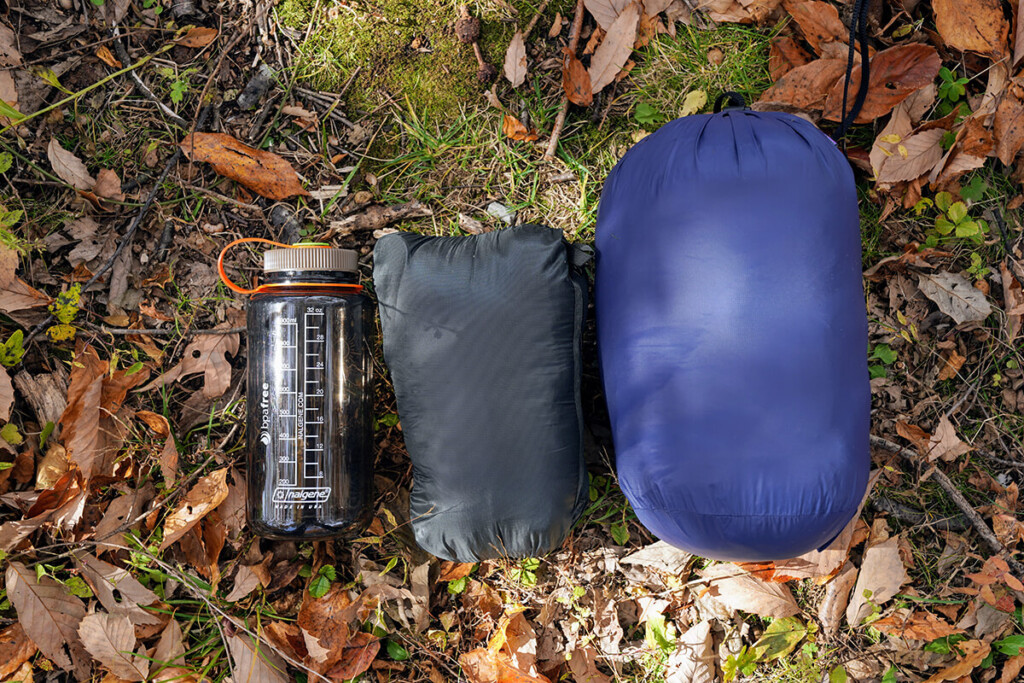
The stuff sack (right) that comes standard with the macro looks bigger than the 1L Nalgene bottle (left), but it actually can be compressed more.
We walked through the Nasu-dake ridgeline in November, where the winds blew through the macro puff hoodie
The trial period was short, but I was able to find the timing of a winter pressure system, so I decided to try it on the ridgeline of Mt. Nasu, which is famous for its strong winds. We will evaluate the usability of the product by simply wearing a macro puff on a 40L day trip backpack with just one base layer on top to evaluate how comfortable it is. We didn't go to the snowy mountains, but snow was already beginning to remain on the ridge.

It was hot in the forest before the wind started, so I opened the zipper all the way. The cold breeze from the front was pleasant and just right.
Once you start climbing, of course, it warms up quickly, and in windless forests, the zipper is quickly opened. It is said that it is less likely to get stuffy than loose padding such as fleece and activated fibers. However, the strength of synthetic cotton does not weaken the heat retention power due to stuffiness, nor does it cause sweat to come off at all, so you don't feel any discomfort that makes you want to take it off. In fact, if the temperature is close to zero degrees this day, it feels just right for a jacket while you're on the move. Even if you use your upper body largely with the trekking pole, the stunning three-dimensional cutting of the shoulders, armpits, and elbows reduces stress and allows you to enjoy comfortable climbing.
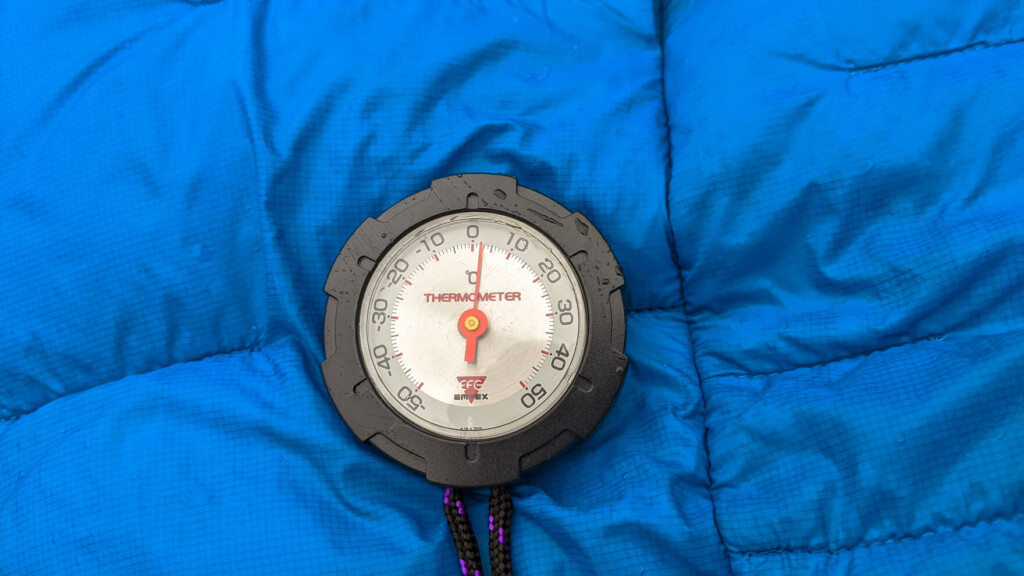
On this day, the temperature dropped rapidly as the winter season got stronger. You can feel the temperature below freezing in places with wind.
As I rose up to the ridge, as expected, a gust of wind hit me from the west side, which was so difficult that I could no longer stand there. I didn't have a balaclava, so I couldn't help but put the hood over to my limit. If you firmly align the drawcord at the back to your head and put your chin in deep, it covers most of your face perfectly like a balaclava, and you can sense the excellentness of this hood without being stoked by strong winds.
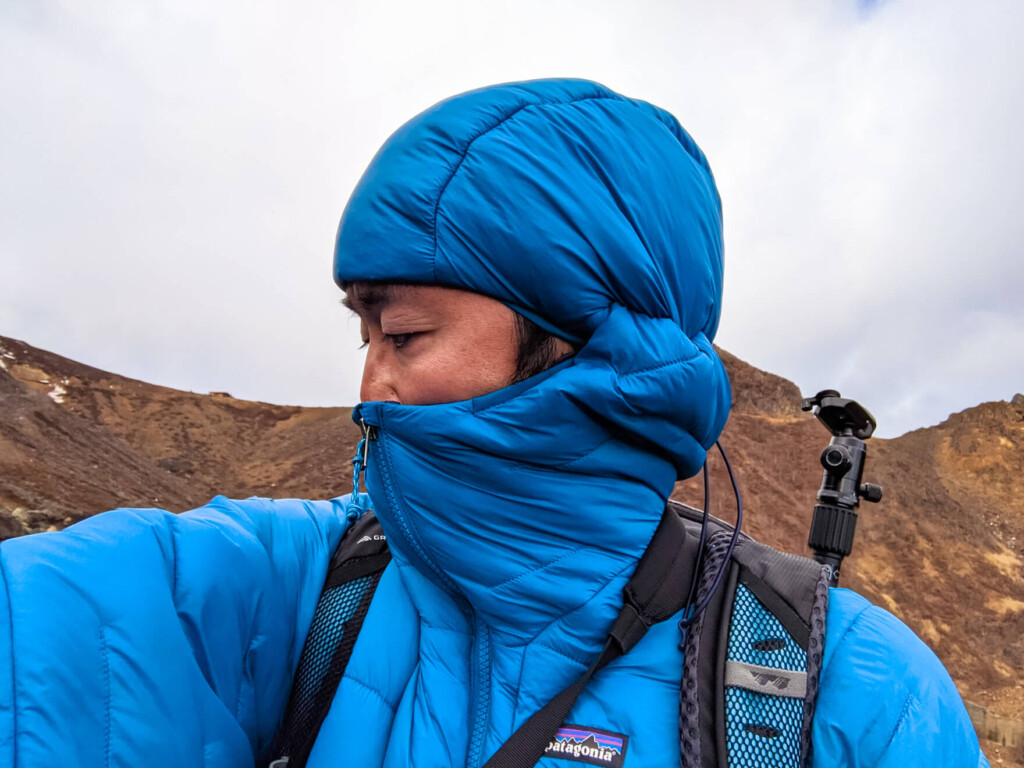
The hood fits firmly to the shape of your head and has excellent heat retention, making it comfortable to use, and no need for balaclava.
In this stormy weather, I walked on two pieces, a base layer and a macro puff, but the macro puff has plenty of insulation, and it gently keeps the warmth of your body temperature, whether it is stopped or walked. No wind blowing into the clothes, and it was confirmed to be highly windproof. By the way, when I changed into a micro puff at this time, although it prevents wind, I naturally felt a relatively cold feeling, and the front zipper also had a slight sense of gaps.
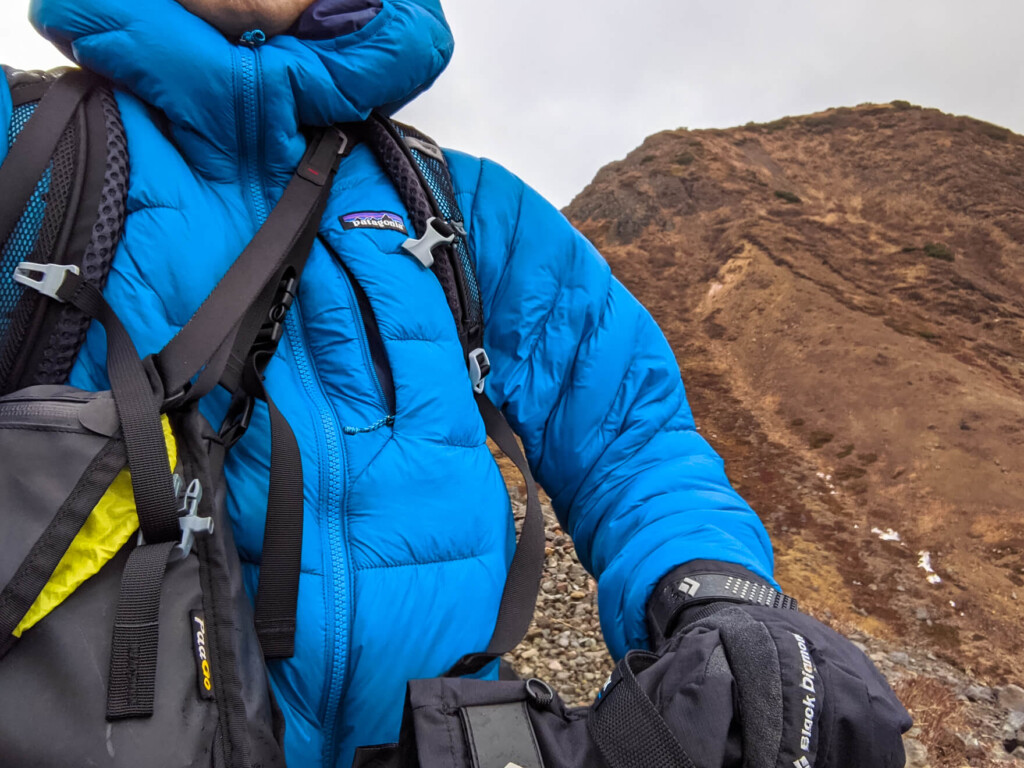
From the hood, to the sleeves, hem, and zippers, I couldn't feel the coldness of the wind except for my exposed face.
The outer material of the nylon ripstop, which has been treated with DWR (durable water repellent), was able to withstand almost no problems for a few minutes, as the mix of rain and sleet began to fall halfway through. The advantage of synthetic fiber insulation is that it doesn't bother you with a slight wetting effect.

With the DWR processing, the outer material will repel some rain. However, water gradually soaks through the seams and other parts.
Also, this was expected, but after leaving the rain for about an hour, not only the seams but also the fabric gradually soaked in. Water-repellent treatments are common and are not particularly strong, so if it rains, take measures to prevent it from getting wet with rainwear or something similar as soon as possible.
Summary: The more you wear it, the more you won't be able to let go of it, the more you'll endure it with a "down-like heat retention efficiency x resistant to wet" benchmark for future synthetic fiber insulation
At first, I imagined the comfort of the micro puffs, so the fit didn't fit comfortably, but the stress-free standard fit, smooth texture like a luxury sleeping bag, stress-free ease of movement, of course, lightness and resilience that you wouldn't expect from synthetic fiber, fine ease of use that firmly suppresses itching parts, and ease of use without worrying about rain or dirt. In short, it is "easy to use as a tool" that makes the more you wear it, and the more you can't let go of it, and the more you wear it, the more you can't let it go, and the more you're attractive.
Especially in areas where wet snow like in Japan, the weather in mountainous areas is likely to change easily, and synthetic insulation jackets are perfect for this variety of situations, even in a variety of situations. Micro Puffs are more useful as lightweight winter clothing in mild, low temperatures other than snow, but these macro Puffs are likely to be useful as winter clothing that can be used all year round, including snowy mountains.
Although it has many features specialized for climbing, it has sufficient basic cold protection performance, so it can be used in a versatile way not only as a belay parka for mountain climbing or as a warm clothes in a tent, but also as a cold protection jacket for a variety of winter activities.


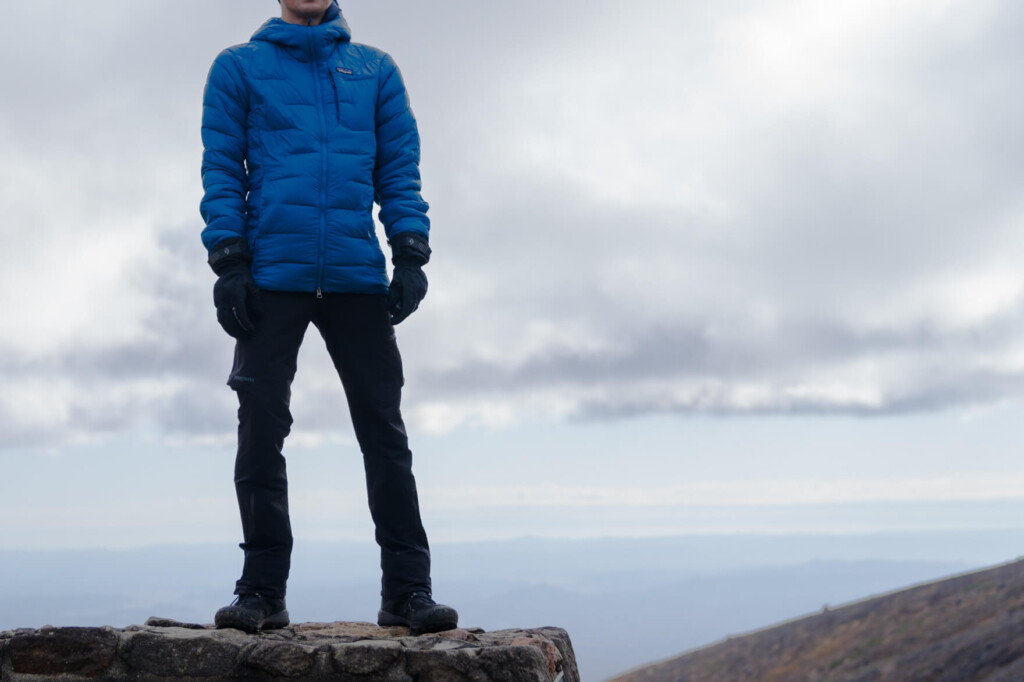
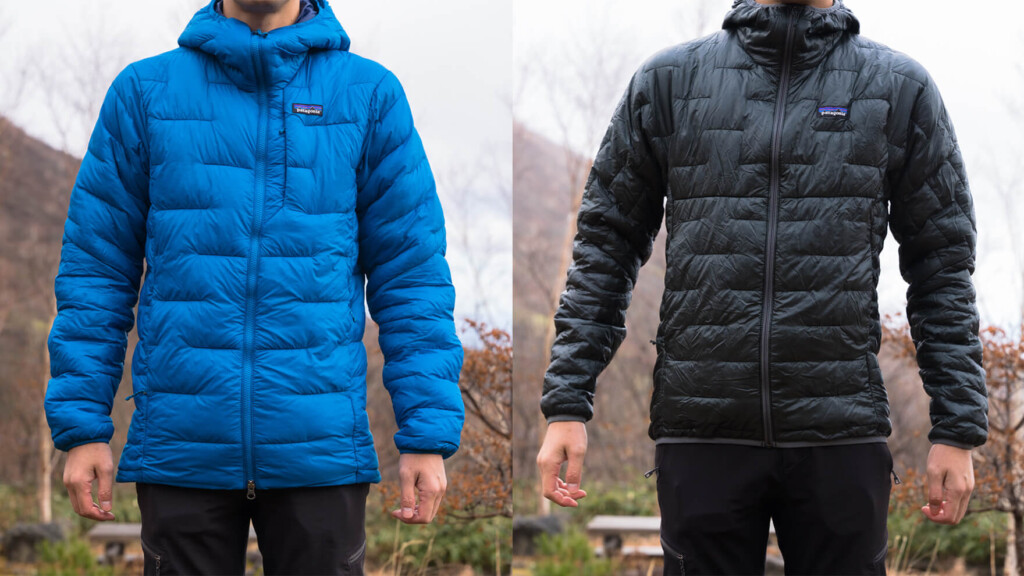
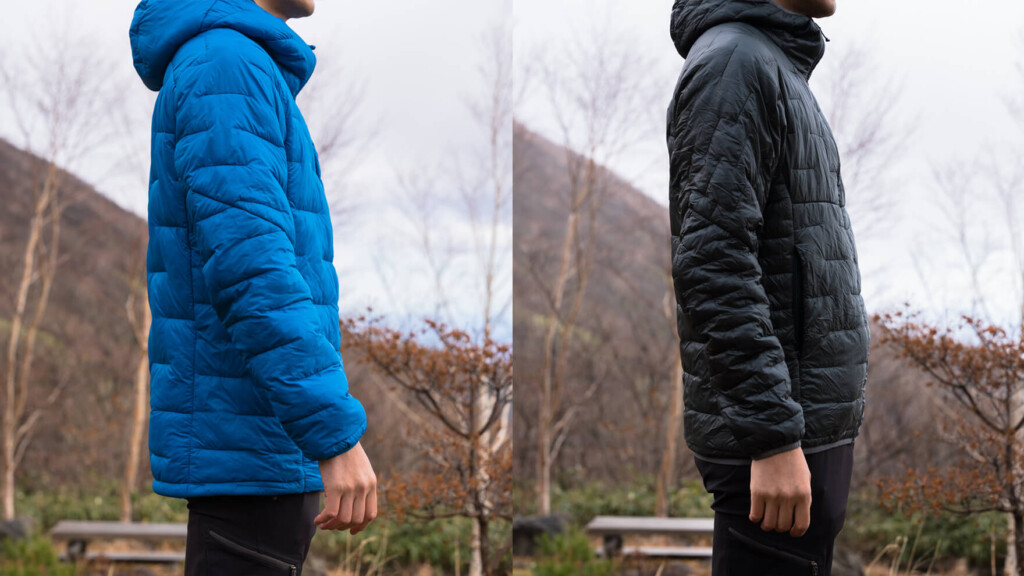
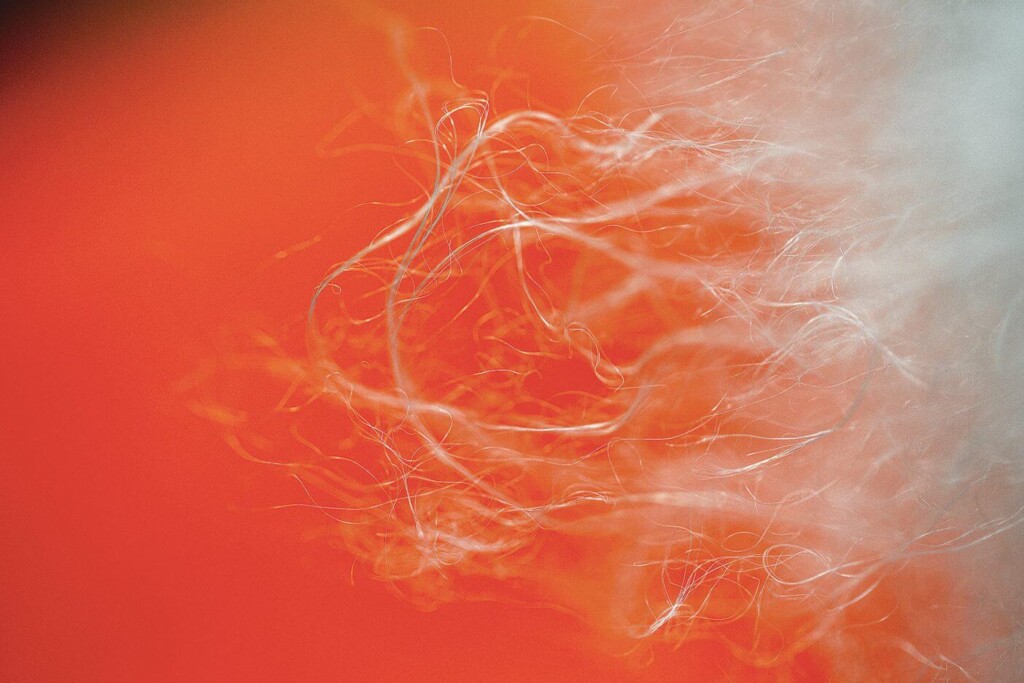
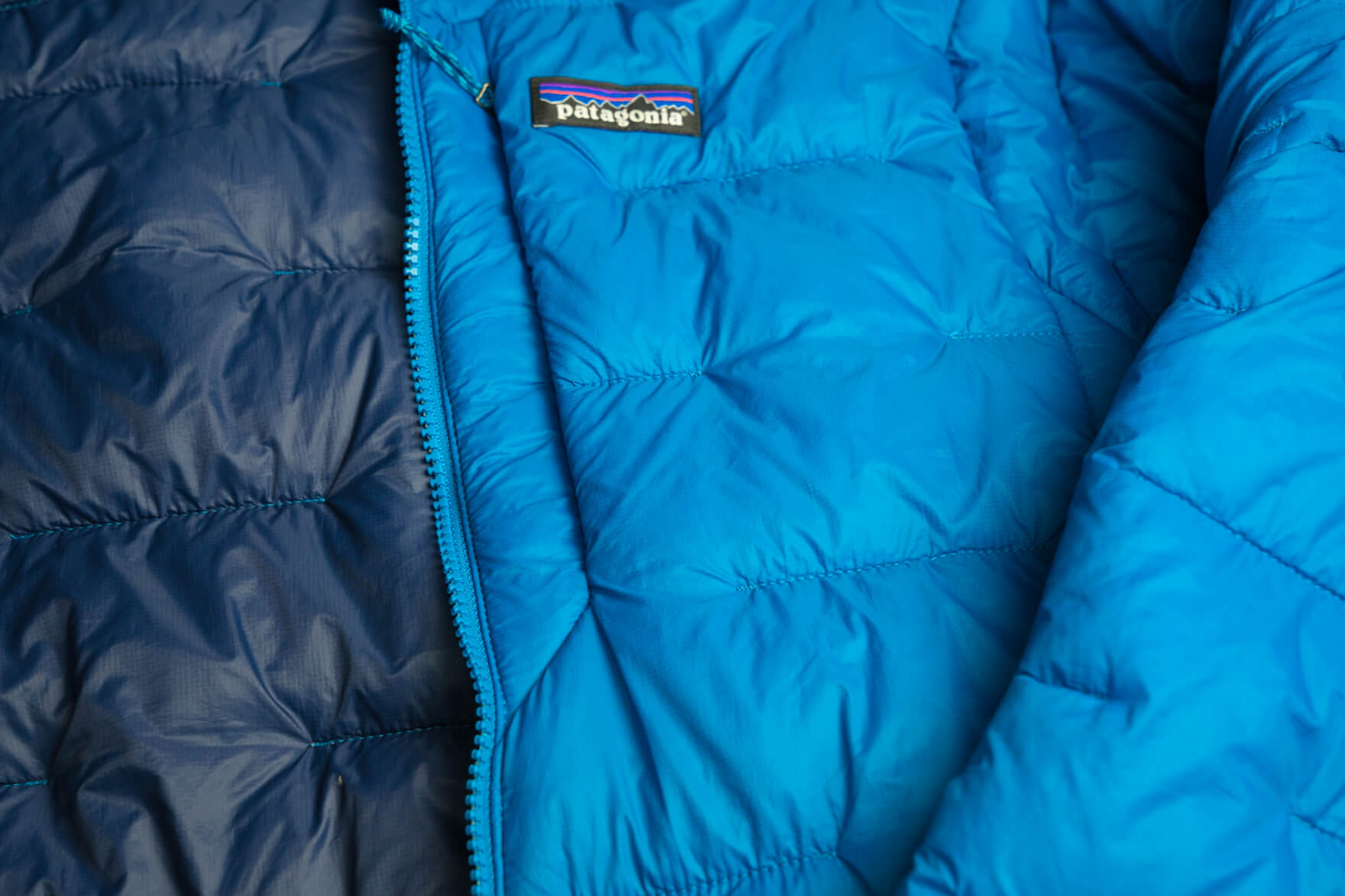
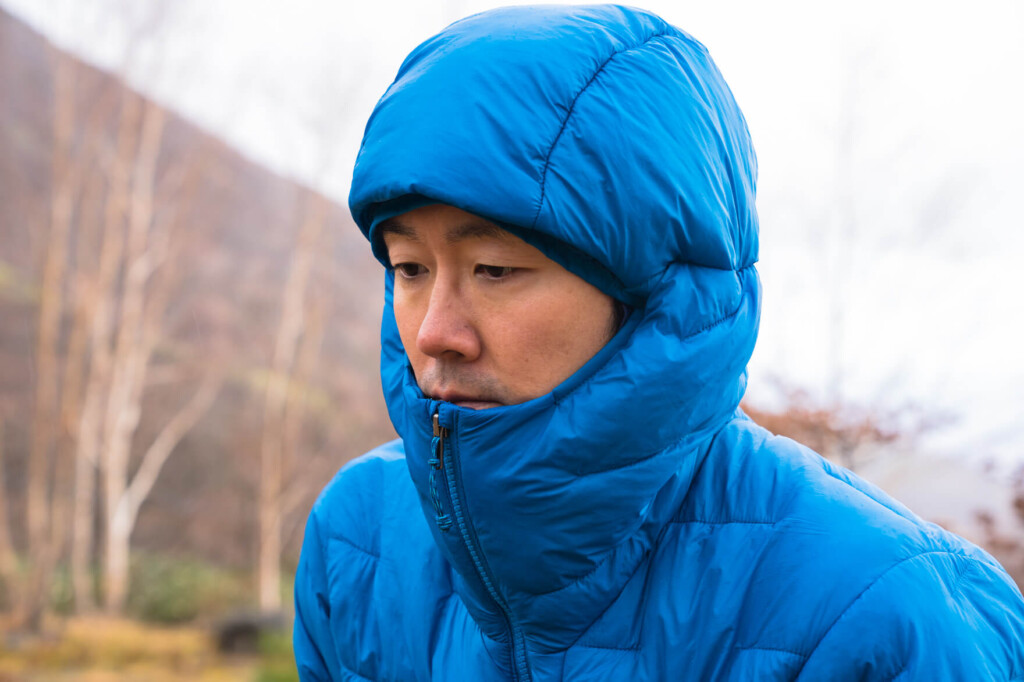
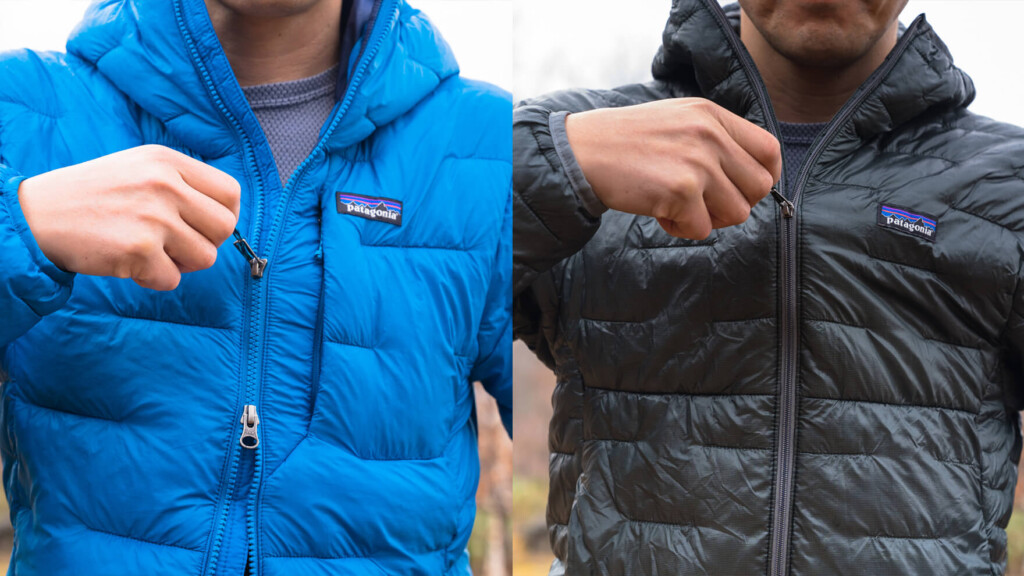
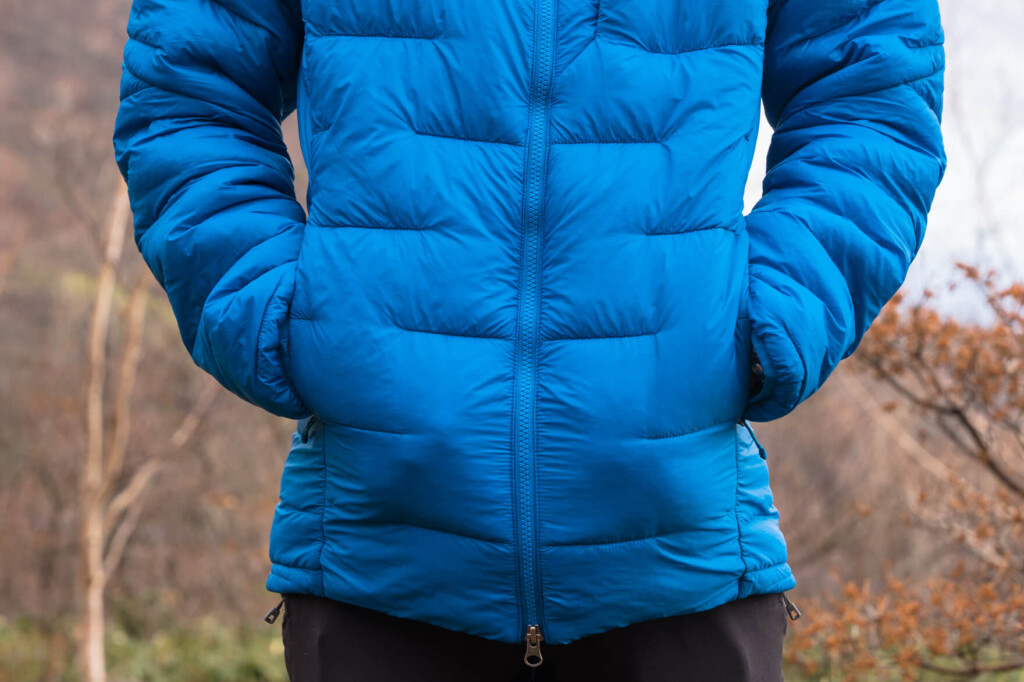

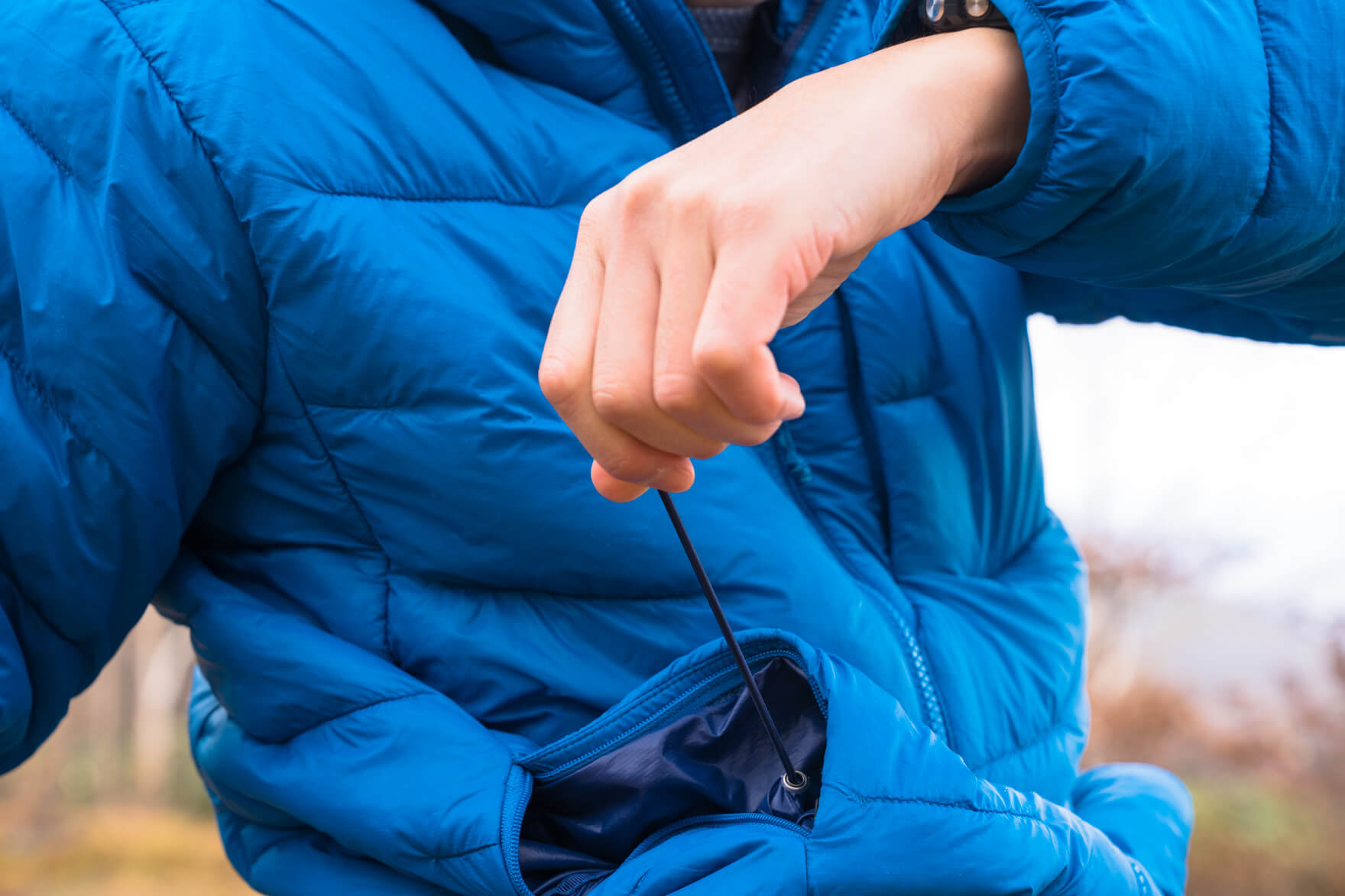
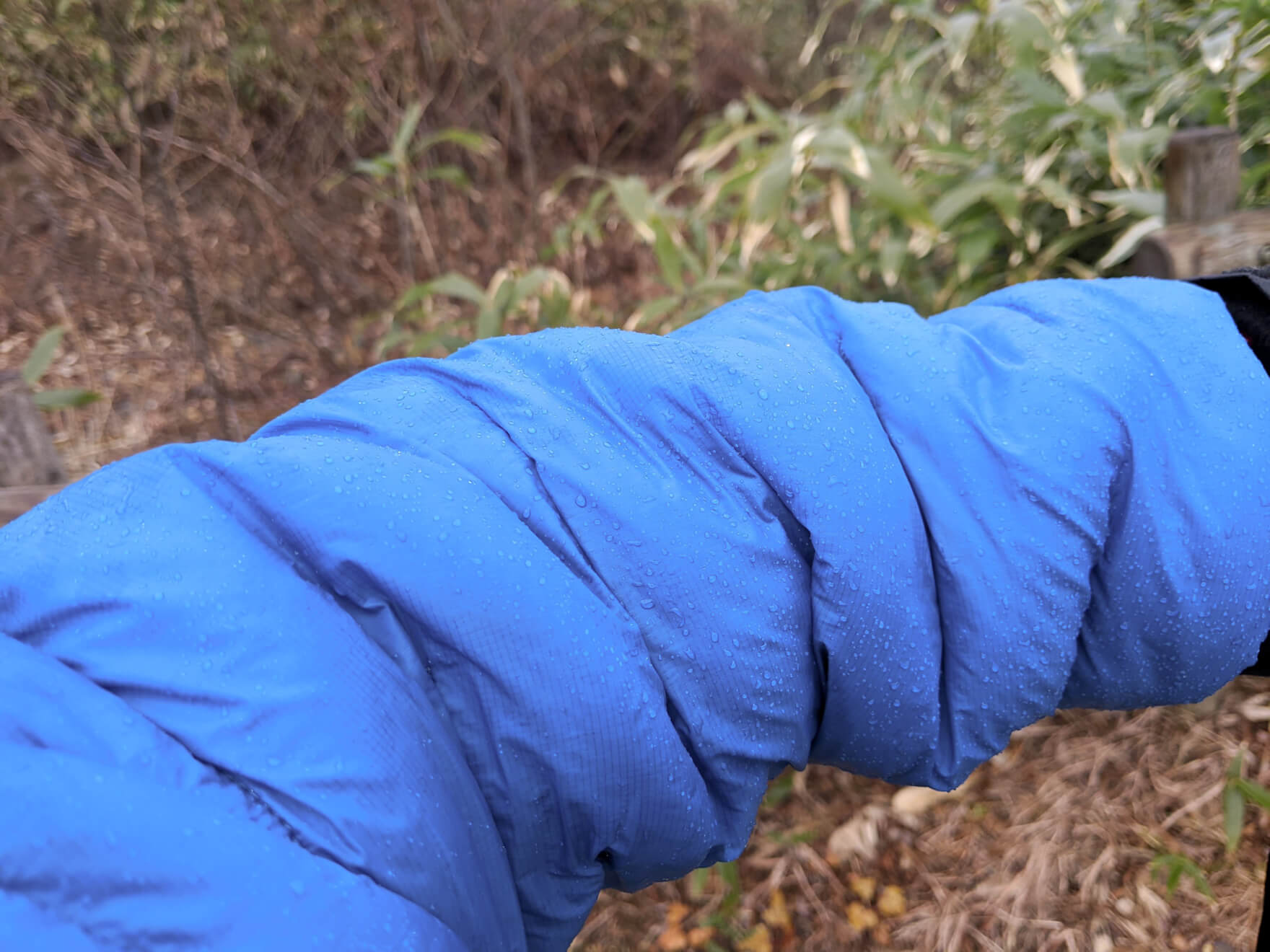
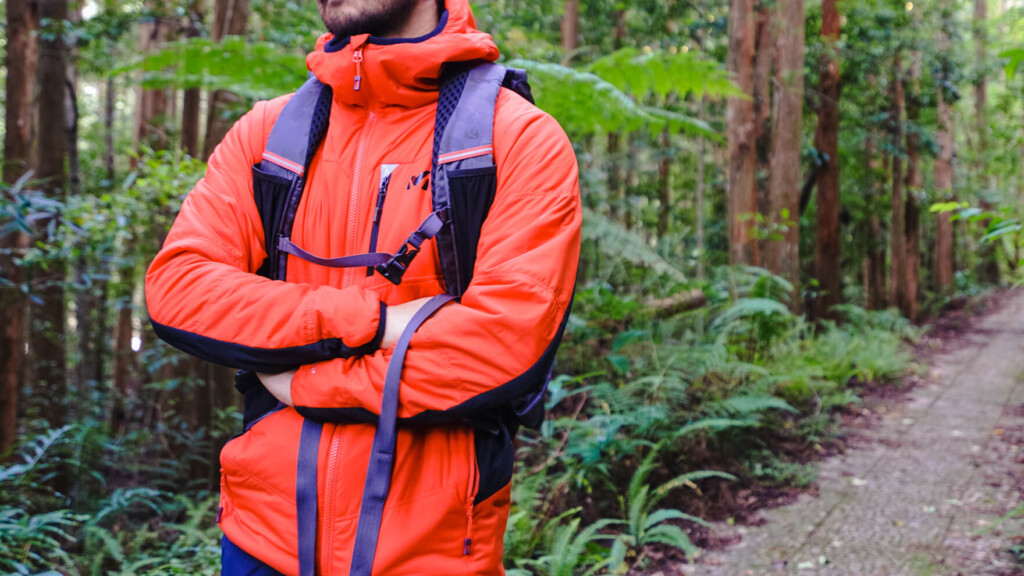 Review: MILLET Breather Toy Hoodie It can be said to be the decisive hit for autumn and winter wear. Active insulation jacket with ultra-water-repellent function
Review: MILLET Breather Toy Hoodie It can be said to be the decisive hit for autumn and winter wear. Active insulation jacket with ultra-water-repellent function Patagonia NanoAir Light Hybrid Review: It is not cold and does not get stuffy. This is the long-awaited wear for the outdoor winter wear
Patagonia NanoAir Light Hybrid Review: It is not cold and does not get stuffy. This is the long-awaited wear for the outdoor winter wear Why Patagonia's "Nano Puff Jacket & Down Sweater Hoodie" remains an eternal classic, and how to interact with and utilize each of them [Practical Review]
Why Patagonia's "Nano Puff Jacket & Down Sweater Hoodie" remains an eternal classic, and how to interact with and utilize each of them [Practical Review] Patagonia's River Rambler Hybrid Sun Hoodie Review: All the features you need for hiking and fishing. The ultimate mountain shirt recommended for all outdoor lovers
Patagonia's River Rambler Hybrid Sun Hoodie Review: All the features you need for hiking and fishing. The ultimate mountain shirt recommended for all outdoor lovers